The 20 Best Switch Games of 2024

People have been predicting the announcement of the Switch 2 (or whatever Nintendo calls its next console) for years, but it seems like it might actually happen in 2025. Which makes 2024 perhaps the last year the ol’ Switch itself was the company’s biggest priority. The Switch has been one of those defining juggernauts of the games business, the most popular system in the world since it was released in early 2017 and, at this point, the second best-selling console of all time, behind the PlayStation 2. (It’s also the second best-selling handheld of all time, behind Nintendo’s own DS, and it will probably pass that when all is said and done.) If the Switch’s time really is coming to a close, it’s going out with a bang. The best Switch games of 2024 are a diverse bunch that includes a new Nintendo favorite, a fantastic remake of one of Nintendo’s all-time best games, and a healthy sampling of the tremendous independent games that have defined 2024. Here’s what Paste loved playing on the Switch this year.
20. Bō: Path of the Teal Lotus
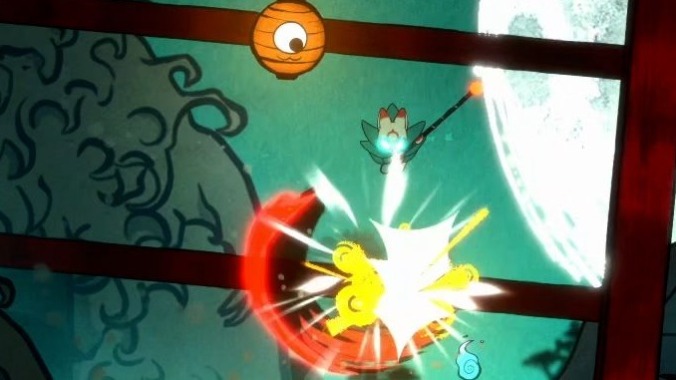
Bō: Path of the Teal Lotus heavily emulates the Metroid-y formula found specifically in Hollow Knight—the inspiration is so striking that calling it a “clone” would not be a far stretch. Bō can equip charms (here dubbed “Omamori”) to provide perks that minimally alter the flow of gameplay, such as dealing more damage while at full health. Hollow Knight’s spells appear, retooled and expanded through the Daruma system—equipable dolls, each with their own unique effect. While pulling all of this inspiration, Bō never quite reaches the height of difficulty that Hollow Knight does. Whether through platforming sections, enemy design or boss fights, Bō is a much easier game, and this is a surprisingly welcome breath of fresh air. It provides a fair challenge while still remaining accessible to those not wishing to beat their head against their controller.—Perry Gottschalk
19. Neva
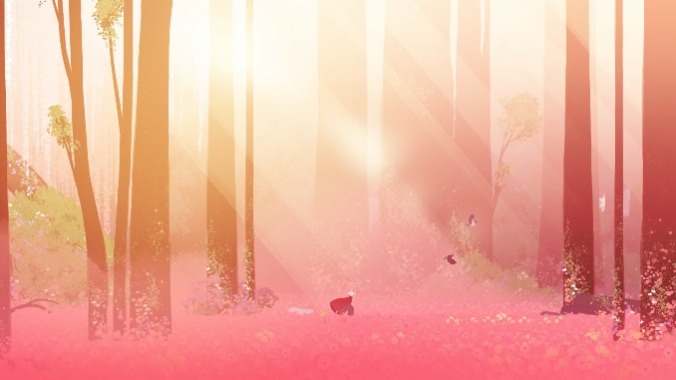
It’s pretty hard to overstate just how dang pretty Neva is. The latest from Nomada Studios (Gris) begins by taking you through impossibly verdant backdrops under a pink-blue sky, and each scene is so stuffed with lush foliage that it all feels ripped from the pages of an idyllic fairytale. But as you journey through the seasons, these vistas begin to wither from encroaching darkness, eventually leading to surreal hellscapes full of shadowy beings and impossible architecture. As these backgrounds shift and become more complicated, so does the gameplay, slowly layering additional mechanics that take this 2D platformer from its overly simplistic beginnings to a satisfying endpoint where you’re simultaneously controlling the swordswoman Alba and her wolf companion Neva against dramaturgical mask-wearing bad guys.
However, while its look and gameplay evolve enough to keep this shortish adventure largely engaging, the same can’t quite be said for its story, which starts off building towards a predictable conclusion, then zigs into some interesting ruminations on seasonal cycles of birth and death, before zagging back towards maudlin cliché. Some of its imagery and Brothers: A Tale of Two Sons-styled ludonarrative hooks almost move it past the point of coming across as broad and weepy, but it doesn’t quite get there. Still, while Neva may mostly be style over substance, thankfully it happens to be very good at the style bit. —Elijah Gonzalez
18. Kill Knight
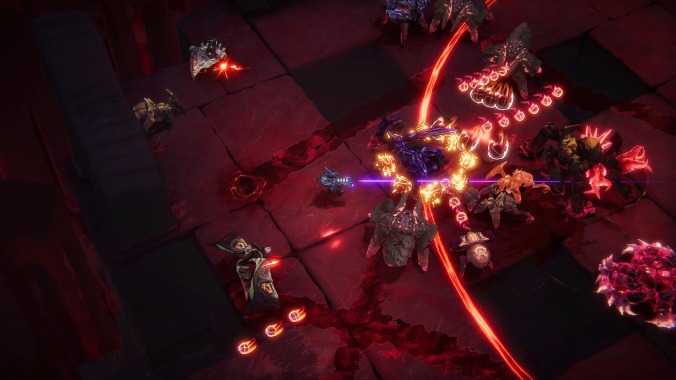
Kill Knight will make your eyes bleed, and I mean that as a compliment. You play as a banished knight doomed to fight wave after wave of creeping monsters in the Abyss, all in order to find the Last Angel and slay them. Basically, it’s a metal album cover in ludic form where you shoot and slash via arcade-style twin-stick gameplay that heavily borrows from DOOM (2016). The core loop is all about brutalizing demons while managing resources to ensure maximum-efficiency bloodletting; you need to kill with your sword to get ammo for your heavy-hitting weapons, absorb blood crystals to charge your special attack, and use said special attack to recover health. It sounds simple enough, but when the screen is filled with laser beams, saw blades, and insects from the ninth layer of hell, it can be a little tricky to keep everything straight. While each of these five levels is unforgiving and fast-paced, thankfully, the controls are silky smooth, mostly giving you the tools to overcome these torments while carving out a killer high score. While I haven’t gotten through all these arenas yet, at its best, I’ve found myself completely engrossed in white-knuckled leaderboard chasing as I tried to maintain my combo and composure.
If I have a main complaint, though, it’s that some of these levels feel less thoughtfully designed than others (I hate the third one!) because they can be filled with traps that are hard to parse amidst the screen full of guys who really, really want to kill you. Another grating detail is that to unlock new weapons and armor, you’re encouraged to complete arbitrary optional objectives that mostly feel like a chore (you can also buy these via an in-game currency, but this takes forever). Basically, getting at least some of these extra weapons seems pretty important for competing on the leaderboard, but doing so can feel like a grind, and I honestly would have preferred it if all the stages and items had just been unlocked from the jump to make it easier to get to the good part. Still, while it can be a tad frustrating in some ways, Kill Knight is a must-play for high-score chasers who want to test their reflexes or see alarming amounts of lo-fi carnage.—Elijah Gonzalez
17. Kunitsu-Gami: Path of the Goddess
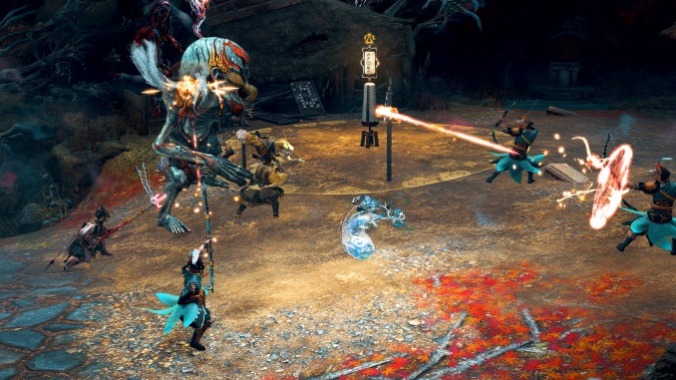
Dance-mad strategy game Kunitsu-Gami is a grower. I couldn’t stop thinking about it after my positive-but-cool review back in July, and even went back and started it up again a month or two later, which I almost never have time to do. It’s fundamentally out of step with the industry and its trends today, and totally confident in that unique vision, which is the kind of fire that forges cult favorites. It was not a hit, but it found its people, and those people love it, for good reason: it mashes up tower defense strategy with the satisfying scratch of the village sim, and then steeps it all in a bewitching portrayal of Japanese folklore. It might have fallen off the radar for most people, but Kunitsu-Gami is a path worth taking.—Garrett Martin
16. Unicorn Overlord
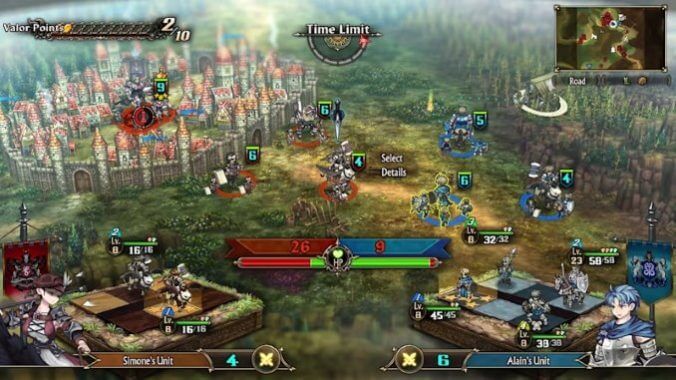
This is more or less the story of Unicorn Overlord: Its art is beautiful, its battle system is fun, and it has the best gameplay loop of maybe any SRPG I’ve ever played, reminiscent of old Fire Emblem if it were built with modern conveniences. It’s a pretty wrapper for a bad story, but that story is at least unobtrusive enough that it neither adds nor takes away from the gameplay. Building towns and promoting units gave me an unmatched feeling of satisfaction, and when I got to see my improvements play out against an especially tough battle, it felt great. I did find myself dragging my feet at about the 30 hour mark, when I was close enough to the end to have made most of the improvements to my army that I could, but no longer pulled through by the momentum of the story. What made me push through wasn’t just how fun the action is, but the small things: the design of new items in the shop, the new towns to save, and the fun of remixing my units to see if they could win in new ways.—Emily Price
15. Shogun Showdown
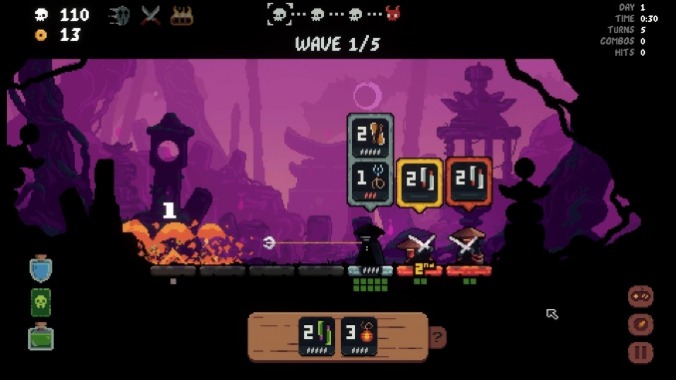
Listen, I get the complaints, especially for folks with no interest in cards; roguelike deckbuilders have rapidly become a hot genre, sometimes to the point where it feels like every other game made by a smaller team checks these same boxes. But while there are a lot of them, a significant chunk of these find their own fascinating niches, which not only helps distinguish them among genre-diehards but also helps newcomers wrap their heads around a style of experience they may not get the appeal of. By removing the traditional concept of a deck while retaining complexity and tough choices, Shogun Showdown threatens to suck in a whole new cohort until they’re haggling at their local boardgame shop for the Planeswalker that will tie their deck together (ok, maybe they won’t go that far, but still). There may be a lot of games about cards these days, but as long as we continue to get ones that shuffle things up in bold and compelling ways, I’m not worried about getting sick of the genre any time soon.—Elijah Gonzalez
14. Little Kitty, Big City
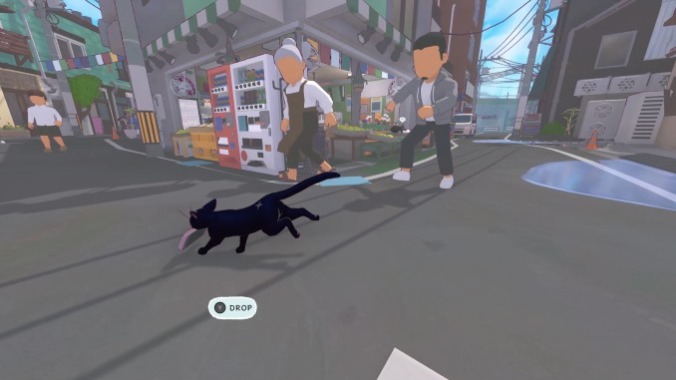
“Hang out games”—games without urgency, that explicitly try not to stress you out too much—cozy games, as many call them—can be tough to get right. They can feel too much like busy work, with a checklist of stuff it wants you to do every day (hey, Animal Crossing!) It’s also not easy to build a world players want to hang out in. You have to be really good at writing stories, creating characters, and putting them in an environment that, if not warm and inviting, is at least compelling enough to keep players checking in. That’s the greatest strength of Little Kitty, Big City. I love this little kitten. I love how it slinks, stalks, crawls, and runs through the city. I’ve tripped probably 100 very serious business people on their way to work and it’s never gotten old. I love all these characters—the brave ducklings who roamed the city for show and tell, the sleepy bodega cat who proclaims himself the mayor, the shiba inus who go out of their mind barking at the kitty unless you give them a bone, which they’ll manically gnaw and slobber on for the rest of the game. Charm coats this game like hair and dander on a cat lover’s couch. With Little Kitty, Big City, Double Dagger has given us an ideal “hang out” game that helps so much to alleviate stress and sadness that it might also be the first “hang in there” game.—Garrett Martin
13. Ys X: Nordics
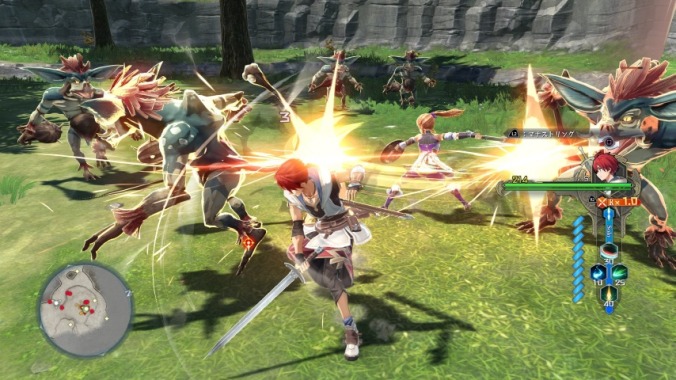
Putting Adol Christin on a boat for most of the runtime of a game seemed like a bad idea, considering his lengthy history of accidents at sea, but maybe Ys X being set before most of those incidents occurred saved him from that fate. Adol proved seaworthy, at least here, and Ys X managed to not only change up the setting by having so much of it occur on the water, but the fighting, as well. Ys X’s combat might seem a little slower at first, since it involves more blocking and evading than usual, but don’t confuse this for a Souls-like: once you start learning some skills, you’ll be using those instead of standard attacks for the most part, and basically never stop moving or attacking outside of the occasional block or evade.
This change gives Ys X an energy that Ys IX could never quite capture in its battles, and the tag-team setup that replaced the party format allows you to focus on building these massive, damage-multiplying skill chains that keeps battles moving no matter how many of them you fight. And, unlike with Ys IX, the pacing is tremendous: you can complete the whole game in a couple dozen hours if you want, but if you’d prefer to go 40-plus or beyond, there’s enough Ys and enjoyment for that, as well. It’s one of the greatest Ys games going, which is saying something.—Marc Normandin
12. Paper Mario: The Thousand-Year Door
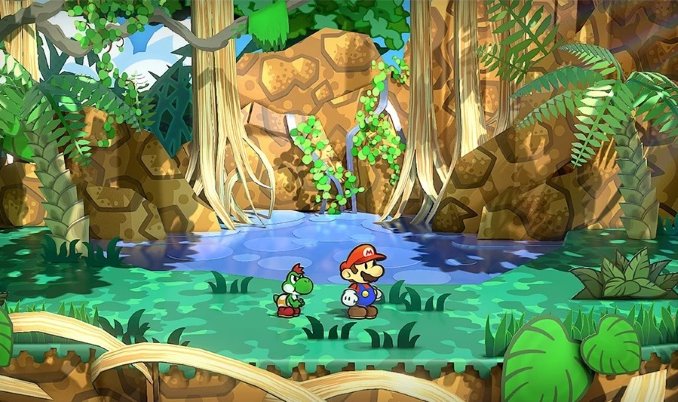
The beloved, hard-to-find GameCube original gets a Switch remake with a few notable changes, updates, and restorations. Guess what: it’s just as great as it was 20 years ago, a charming, clever RPG romp with a unique perspective on classic Mario characters and concepts, and one of the best Switch games of 2024. It somehow manages to be a genuinely deep, rewarding RPG, with emotional highpoints and memorable relationships, while also maintaining a fun and breezy tone most of the time. The remake doesn’t just render this once hard-to-afford game attainable again; it also restores a key character trait that was cut out of the initial American release, with the ghost witch Vivian finally announcing her trans status here 20 years after it was edited out during its original localization. It was one of the best GameCube games in its day, and now it’s one of the best Switch games of 2024.—Garrett Martin
11. The Legend of Zelda: Echoes of Wisdom
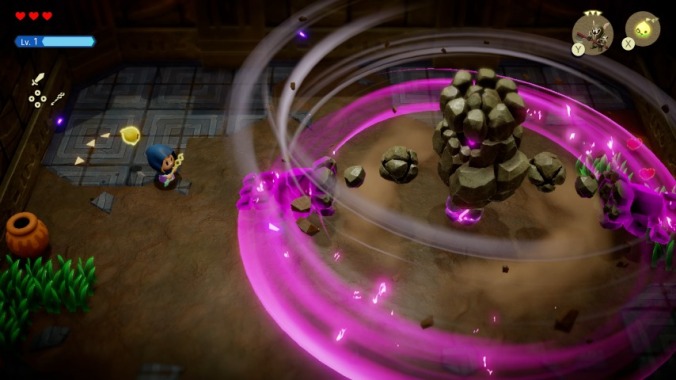
It’s been long overdue for Zelda to take center stage (or retake it if you count the maligned CD-i games), and thankfully The Legend of Zelda: Echoes of Wisdom makes for a worthwhile debut. With Link out of the picture, it’s up to Zelda to save Hyrule from encroaching calamity, and her main means of doing so is a magical staff that lets her clone objects and creatures. While Echoes of Wisdom may be structurally similar to other top-down Zelda games, the moment-to-moment gameplay takes a cue from Tears of the Kingdom’s playbook, involving more engineering and puzzling than sword slashing. Here, the core loop of summoning entities to solve puzzles and battles leads to many novel scenarios: use chairs and beds to create a structure that clears a chasm, deploy a spiky minion to repel a charging foe, or repurpose an exploding monster as a makeshift bomb. Although the UI eventually becomes a chore to navigate, and it loses steam in its back half, it’s pretty cool that Nintendo made a game where finding a particularly useful inanimate object, like a trampoline or a tile that floats for a few seconds, feels as consequential as unearthing the Master Sword. More weird follow-ups like this, please.—Elijah Gonzalez
10. Tales of Kenzera: ZAU

The beauty of Tales of Kenzera: ZAU is that grief is not linear. It’s not something you heal from and it doesn’t ever look the same across two people. It’s a deeply unique experience, but at the same time, it’s also universal. The complexity of grief is what makes it so. Zau feels anger, guilt, and sadness. He feels all of it and he mediates those emotions in the Great Spirits he helps cross over. He helps a parent loosen their grip on their child, he provides a salve to the anger between father and son, and he learns to let go. Each new character is a different expression of why you can get stuck in your loss, how it can debilitate you and keep you in an endless loop, ultimately impacting those around you. But even when the darkness rushes in at the end of boss battles as you try to escape a zone, the vibrancy of those emotions is never lost. When I pitched this article, I didn’t know if anyone would understand what I meant. The grief that Surgent Studios has captured is vibrant and saturated. It’s not a dull pang or a numbness that creeps. It’s more potent and the beautiful world it lives in makes it all the more impactful.—Kate Sánchez
9. Shiren the Wanderer: The Mystery Dungeon of Serpentcoil Island
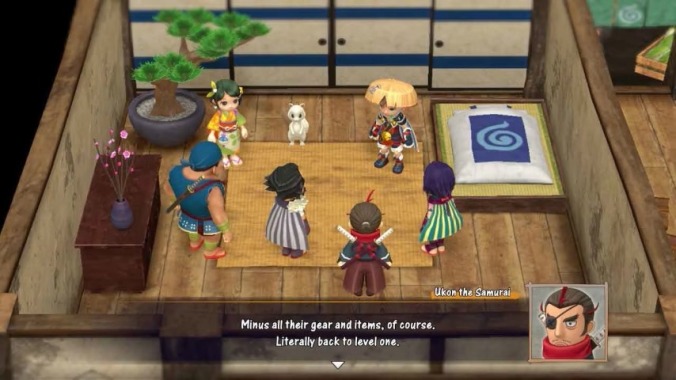
The Mystery Dungeon of Serpentcoil Island is the first completely new Shiren title in 13 years, and it’s an incredible one. It’s the most refined and approachable Shiren to date. Dedicated series veterans might be able to get through the initial 31-floor dungeon with speed and relative ease, but for most players it will take time and experience to learn the ins and outs of the game, its items, its rules, and to build the muscle memory needed to see your way through the scenarios you’ll come across. You can send items back to the initial warehouse by way of a special pot or a merchant who makes that run—both instances being random—either putting an item you don’t need on this run in or attempting to salvage something vital from a doomed run before it ends. The game’s entirety is not revealed to you from the outset: you unlock new special items or features as you go by completing some optional story bits, which will be marked in the areas they’re occurring in with an exclamation point. For instance, if you want a magical staff that turns monsters into peach buns that you can then eat to turn into that monster yourself for the duration of a floor, you need to complete the quest with the Heavenly Maiden. Which will in turn also help you to unlock Asuka the swordswoman as a traveling companion in the dungeons—she really loves peach buns, and won’t be able to rest until she’s got access to a steady stream of them. There’s something for everyone in Serpentcoil Island. The main dungeon is just plain fun for series veterans even if it’s easier than some past Shirens, full of plenty of personality and character and its own little quirks and oddities to familiarize yourself with. And it still offers plenty of challenge for newcomers while also being welcoming and open to the idea of this being someone’s first true roguelike experience.—Marc Normandin
8. Arco
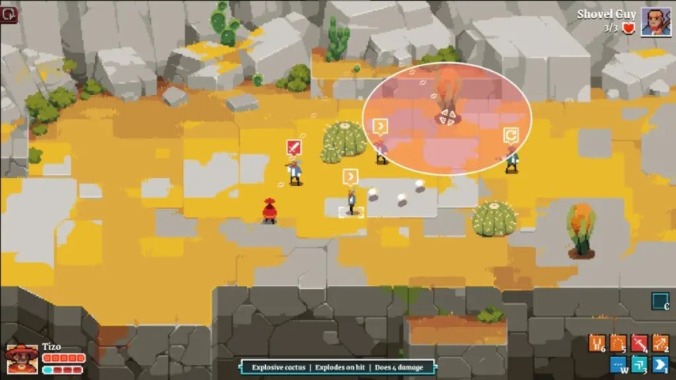
Turn-based strategy game Arco is a smart, sharply written, emotionally powerful game about a Mesoamerican civilization slowly being destroyed by colonialism, a pixelated revisionist Western in which the “newcomers” and the corporation they work for gleefully wipe out whole societies to maximize profits. The dialogue options are sparse but incisive and define characters quickly but clearly, and the vignette-style approach to the story gives a deeper and more expansive view of this culture and the war it’s destined to lose. And its battles are thrillingly unique for the genre; although you input orders for your characters one at a time, their actions are then carried out in real time, so you’ll have to predict your enemies’ tactics in advance. It’s more dynamic and challenging than the traditional Civilization or Final Fantasy Tactics biz, and its complexity and fluidity is always energizing, which makes it one of the best Switch games of 2024.—Garrett Martin
7. Prince of Persia: The Lost Crown
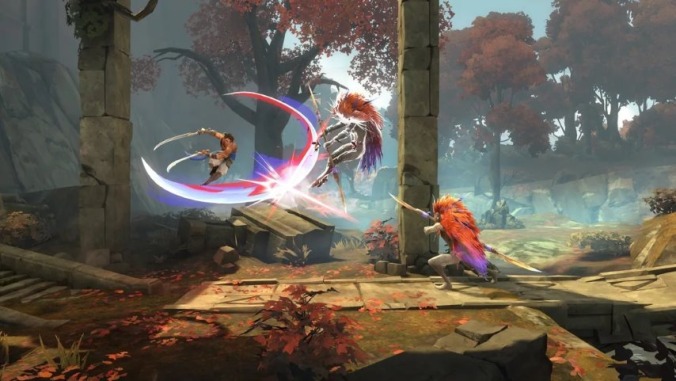
From the first rotoscoped jogs and leaps of Jordan Mechner’s brother, the core of Prince of Persia has been one of the exaltation of movement. We’ve come a long way since young David’s parking lot antics. Returning to its two-dimensional origins, The Lost Crown carries forward the dedication to cruel traps, brisk combat, and fluid motion into a stunningly-realized, interconnected world of elaborate puzzles and shortcuts, and it does it all with a rush of speed the franchise has rarely known. With how truly outstanding this game is, I’d be remiss in not mentioning how astonishingly idiotic the powers-that-be at Ubisoft were for dissolving and reassigning this team to work on old, crusty IP that posts big numbers for shareholders instead of giving them every opportunity to succeed a second time.—Dia Lacina
6. Llamasoft: The Jeff Minter Story

Just as earlier Gold Series entry The Making of Karateka and its precursor Atari 50 gave us an in-depth look at the background and creation of the games they focused on, Llamasoft is full of videos and archival footage about game designer Jeff Minter’s decades-long history and how his games were created, marketed, and received by the press and the public. Minter himself is beguiling, a shamanistic figure who indulges his love of computer games, psych and prog rock, and hoofed mammals in semi-seclusion in Wales, and who has been an outspoken proponent of independent game design for most of his career. The latest entry in Digital Eclipse’s series of playable documentaries collects dozens of Minter’s early games, from his earliest ZX81 rough drafts up to his 1994 masterpiece Tempest 2000, and the hallmarks of a true artist are unmistakable. Throughout his career Minter has continually iterated on similar themes, mechanics, and images, creating a unified body of games whose dreamlike logic and visuals are at odds with their strict difficulty and well-defined mechanics. Minter’s work exists in the contrast between form and function; he’s a visual iconoclast resolutely exploring the most traditional notions of “gameplay” through surreal arcade games that always bear his personal signature. His games look like abstract art and play like something you could’ve found in a bowling alley arcade in 1985, and that’s about the most bulletproof approach to game design I can think of. For over 40 years Minter has made some of the greatest, most inventive games ever, and this brilliant collection is one of the best games of 2024.—Garrett Martin
5. Animal Well
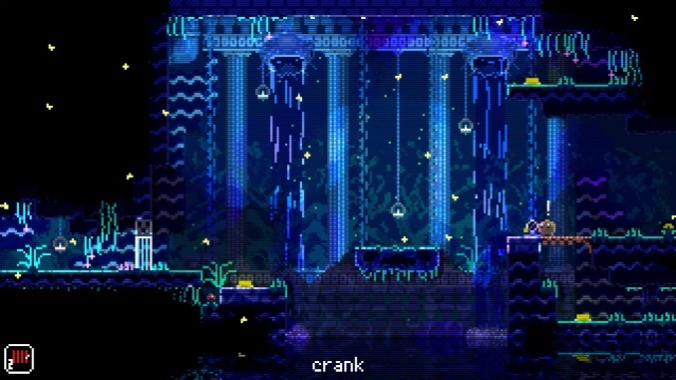
You’ve probably seen many of Animal Well’s components in isolation before. Its structure is at least partially inspired by games like Metroid, its style of puzzles bear a lot of resemblance to Fez, and its retro aesthetics call to mind a whole host of older games and contemporary works. But the way these parts come together is nothing short of uniquely enrapturing. Its smaller puzzles are rewarding, and its larger ones are so satisfying that things can quickly spiral into outright obsession, something made more captivating by this well-realized setting that is charming and disquieting in equal measure. At its core, Animal Well profoundly understands how to encourage and pay off curiosity, which is probably why, even after digging into and solving many of its mysteries, I still need to know just how much deeper this rabbit hole goes.—Elijah Gonzalez
4. Lorelei and the Laser Eyes
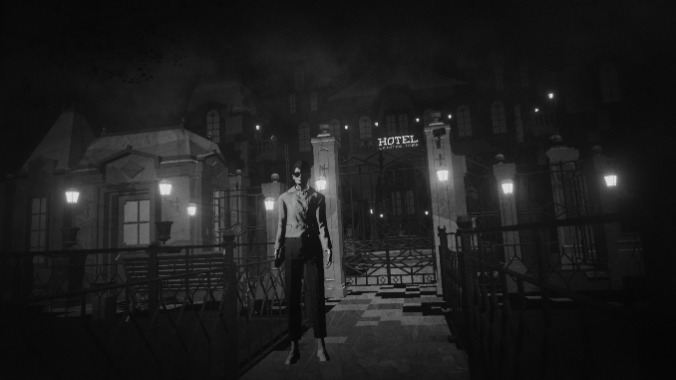
Lorelei and the Laser Eyes is a game with vision. It wraps intriguing puzzles in a digital gothic framework. It makes the most of its chosen medium as it forces us to navigate the tenuous details of this backdrop. Just about every layer of the experience is creatively risky, from its fragmented narrative to its uncompromising barrage of challenges, but these gambles largely pay off to deliver something with purpose and direction. Crafting this kind of maze isn’t easy; it takes a combination of subtle guidance and faith in your audience. But despite these challenges, Simogo never loses sight of how to stoke curiosity about what’s lurking around the next corner, whether it’s a treasure you’ve been seeking or, conversely, something horrible lurking in the dark.—Elijah Gonzalez
3. Thank Goodness You’re Here!

Thank Goodness You’re Here, a surreal puzzle-platformer where comedy takes precedence over everything else, is a game like none other. Imagine if peak Monty Python somehow made an Adult Swim show in the 2000s, except it was a game and not a show, and featured Matt Berry giving another impeccable Matt Berry performance. The “puzzles” are less about challenging you and more just a framework for bizarre little comedy sketches, pretty much all of which are absolutely hilarious. And it smartly ends well before it starts to wear out its welcome, after only two or three hours. It’s basically a perfect game if you share its sense of humor, and if you don’t share its sense of humor, you’re probably a bit of a bore. (Sorry.) It’s one of the most purely enjoyable games I’ve ever played, and I’m thinking it will be as fun to revisit again and again as the great comedies it echoes; it’s absolutely one of the best games of the 2020s so far.—Garrett Martin
2. Balatro
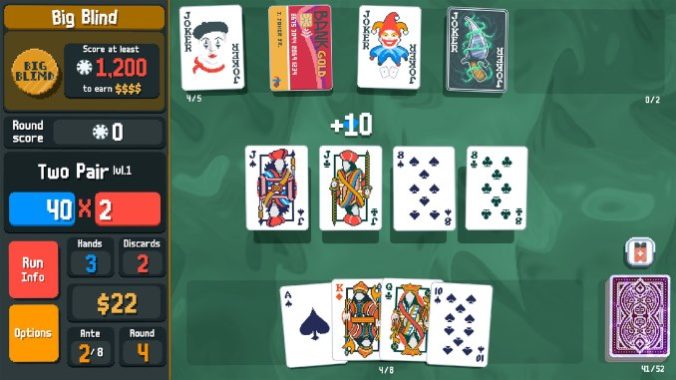
As someone who would rather play virtually any board game than a hand of poker, I was pleasantly surprised by Balatro, a roguelike deckbuilder that transforms this card game into something else entirely. Some elements are what you’d expect; you begin with a standard 52-card deck and score by putting together traditional poker hands like pairs, flushes, and straights. However, where things get interesting is that over the course of a run, you can augment your deck by replacing certain cards with others, upgrading them, collecting passive upgrades that amplify your score, and more. Instead of playing against opponents like in Texas Hold ‘Em, your goal is to build hands that score enough chips to get you through an increasingly expensive series of antes. Like any successful deckbuilding game, decision-making matters in both assembling your deck and playing it. Instead of just going by traditional poker hand strength, points are calculated by multiplying the base amount of chips your hand is worth (chip count corresponds to the card rank, i.e., 9, 10, J, Q, etc.), with the particular multiplier associated with that hand (for instance, a two pair has a x2 multiplier while a three of a kind has a x3 multiplier). Where things get busted is that you can upgrade the multipliers associated with specific hands or cards, and passive abilities add to your multiplier, which can eventually dramatically boost the number of chips you earn. You can gear your deck around certain hands, suits, or passive abilities to increase the odds of hitting big. Outside of the deckbuilding, you’re given a wide array of options and information that makes it feel tactically deep. The game counts cards to let you know the odds, has the option to discard and redraw, allows you to change the order that passive abilities activate, and has consumable items. Good deckbuilders feel fair and like they offer meaningful decisions while constructing and playing your deck. Balatro does all that while also letting you blast apart the rules of poker.—Elijah Gonzalez
1. 1000xRESIST
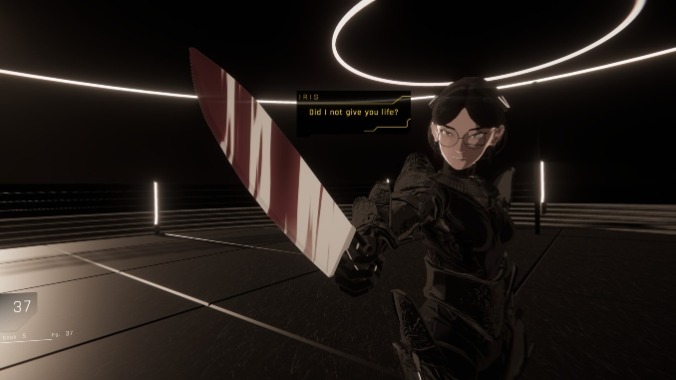
1000xRESIST is many things, but it’s not a game that holds back any gut punches. It refuses to fit into any one box. It’s a walking simulator for a few hours before switching to a side-scroller. The third-person perspective suddenly shifts to a top-down view. It’s a visual novel but also you’re lunging between different nodes on a wide map. It’s a time puzzler and, at times, survival horror. It’s wholeheartedly committed to furiously surprising you again and again and again, and it undoubtedly excels in this mission from beginning to end. It’s the kind of game that can leave you feeling transformed. Few are the games as bold and brave and brilliant as this one; throughout its 15 hours, there’s a palpable eagerness to take the risks that many other teams would shy away from, especially considering this is Sunset Visitor’s debut game. 1000xRESIST is a dazzling testament to the stories this medium has yet to tell; an exemplification of the best that small yet ambitious teams can create; and a gateway to a future in which more videogame narratives have the courage and soul to tackle the ideas that it executes with equal precision and grace. It’s simply triumphant in everything it sets out to do.—Natalie Flores